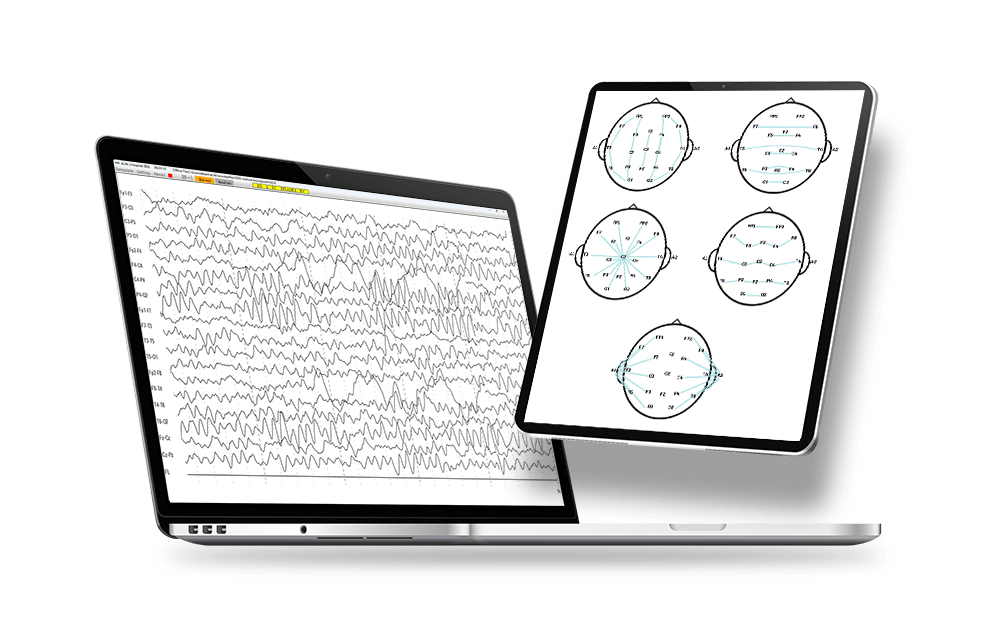Uncovering the Power of EEG 128 Channel: Exploring its Benefits and Applications
Introduction to EEG 128 Channel
In the field of neuroscience, Electroencephalography (EEG) plays a crucial role in understanding the electrical activity of the brain. EEG has been widely used for decades to diagnose and monitor various neurological disorders. With advancements in technology, EEG systems have evolved, and one such innovation is the EEG 128 Channel.
Understanding EEG and its applications
EEG is a non-invasive technique that measures the electrical activity generated by the brain. It involves placing electrodes on the scalp, which detect the small electrical signals produced by the neurons. These signals are then amplified and recorded for analysis.
The applications of EEG are diverse and far-reaching. EEG is commonly used in clinical settings to diagnose epilepsy, sleep disorders, and monitor brain activity during surgery. It is also utilized in research to study cognitive processes, brain-computer interfaces, and neurofeedback. However, traditional EEG systems have limitations in terms of spatial resolution and the number of channels they can record simultaneously.

What sets EEG 128 Channel apart?
The EEG 128 Channel system stands out due to its high channel count, providing a more comprehensive view of brain activity. Traditional EEG systems typically utilize 19 to 32 channels, while the EEG 128 Channel system expands this capacity significantly. This increased channel count allows for better spatial resolution, enabling researchers and clinicians to pinpoint specific brain regions involved in various functions.
Moreover, the EEG 128 Channel system offers improved signal quality and lower noise levels. This leads to more accurate and reliable data, enhancing the validity of research findings and clinical diagnoses. The system is also designed to be user-friendly, with intuitive software interfaces that facilitate data acquisition and analysis.
Benefits of using EEG 128 Channel
The adoption of EEG 128 Channel systems brings numerous benefits to the field of neuroscience. Firstly, the increased number of channels allows for more precise localization of brain activity. This is particularly useful in research studies aiming to investigate specific brain regions involved in complex cognitive processes or neurological disorders.
Secondly, the enhanced spatial resolution provided by the EEG 128 Channel system enables researchers to map brain activity onto anatomical structures with greater accuracy. This facilitates the integration of EEG data with other neuroimaging techniques, such as functional Magnetic Resonance Imaging (fMRI) or Positron Emission Tomography (PET). The combination of these modalities provides a more comprehensive understanding of brain function.
Additionally, the EEG 128 Channel system allows for simultaneous recording from multiple brain regions, enabling researchers to study functional connectivity and network dynamics. This is crucial in unraveling the complex interactions between different brain regions and their role in normal and pathological brain functioning.
EEG 128 Channel in research and academia
The EEG 128 Channel system has revolutionized research in neuroscience and academia. By providing an unprecedented level of detail in brain activity recording, researchers can delve deeper into the mysteries of the human brain.
In cognitive neuroscience, the EEG 128 Channel system has been instrumental in investigating complex cognitive processes such as attention, memory, and decision-making. Researchers can precisely pinpoint brain regions involved in these processes and analyze the temporal dynamics of neuronal activity.
Furthermore, the EEG 128 Channel system has contributed to advancements in brain-computer interfaces (BCIs). BCIs allow individuals to control external devices or communicate by using their brain activity. The high channel count of the EEG 128 Channel system enables more precise decoding of brain signals, leading to more accurate and efficient BCIs.
EEG 128 Channel in clinical applications
In clinical settings, the EEG 128 Channel system has proven invaluable for diagnosing and monitoring various neurological disorders. Epilepsy, for example, can be better characterized using the increased channel count and spatial resolution of the EEG 128 Channel system. It allows for the identification of epileptic foci and the mapping of seizure propagation patterns, aiding in treatment planning.
The system also plays a crucial role in sleep studies. Sleep disorders such as sleep apnea or rapid eye movement (REM) sleep behavior disorder can be accurately diagnosed and monitored using the EEG 128 Channel system. The increased number of channels provides a more detailed analysis of sleep architecture and brain activity during different sleep stages.
Additionally, the EEG 128 Channel system has potential applications in assessing mental health disorders such as depression and anxiety. By examining specific brain regions involved in these conditions, clinicians can gain valuable insights into the underlying neural mechanisms and tailor treatment approaches accordingly.
EEG 128 Channel in neurofeedback and brain-computer interface
Neurofeedback is a technique that allows individuals to learn to self-regulate their brain activity. The EEG 128 Channel system enhances neurofeedback training by providing a more precise and detailed representation of brain activity. This enables individuals to better understand and control their brain states, leading to improved cognitive functioning and emotional regulation.

Furthermore, the EEG 128 Channel system plays a crucial role in the development of advanced brain-computer interfaces. These interfaces enable individuals with motor disabilities to control external devices using their brain signals. The high channel count and spatial resolution of the EEG 128 Channel system significantly enhance the accuracy and efficiency of these interfaces, improving the quality of life for individuals with disabilities.
EEG 128 Channel in sports performance and cognitive training
In the realm of sports performance, the EEG 128 Channel system has been utilized to study brain activity patterns associated with optimal performance. Athletes can undergo EEG assessments to identify neural markers of attention, focus, and decision-making, allowing them to optimize their training regimens and improve their performance on the field.
Cognitive training programs have also benefited from the EEG 128 Channel system. By monitoring brain activity during cognitive tasks, researchers can assess the effectiveness of training programs and tailor interventions to target specific cognitive functions.
EEG 128 Channel in sleep studies and mental health assessment
The EEG 128 Channel system has made significant contributions to sleep studies and mental health assessments. Sleep disorders are accurately diagnosed and monitored using the system’s high channel count, providing detailed information about sleep architecture and brain activity during different sleep stages.
In mental health assessments, the EEG 128 Channel system offers insights into the neural mechanisms underlying conditions such as depression, anxiety, and attention deficit hyperactivity disorder (ADHD). By analyzing specific brain regions involved in these conditions, clinicians can develop personalized treatment plans and monitor treatment progress.
Conclusion: Harnessing the full potential of EEG 128 Channel
The EEG 128 Channel system has revolutionized the field of neuroscience, providing researchers and clinicians with a powerful tool to explore the intricacies of the human brain. Its high channel count, enhanced spatial resolution, and improved signal quality make it invaluable in studying cognitive processes, diagnosing neurological disorders, and developing innovative treatment approaches.
As technology continues to advance, the EEG 128 Channel system holds great promise for further discoveries in neuroscience. By harnessing its full potential, we can deepen our understanding of the brain and unlock new insights into human cognition, behavior, and mental health.



